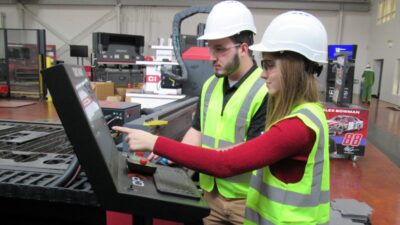Deciding whether to employ a programmable logic controller (PLC), distributed control system (DCS) or a batch control depends on certain application requirements.
The overall goal is to manufacture high-quality products with the perfect blend of ingredients, with the most accurate process parameters, and at the lowest possible cost. Attaining that ideal is often called "The Golden Batch."
If a company is still trying to create its own vision of "The Golden Batch" using controls based on programmable logic controllers (PLCs) and distributed control systems (DCS), there’s nothing wrong with that. However, controlling production using batch execution software should be considered. Batch execution software has improved substantially in reliability and capability over the last few years due to implementations from life science companies.
Using the ISA88 standard for batch control systems
Both approaches to "The Golden Batch" are based on the International Society for Automation (ISA)88, Batch Control standard, which is designed to: "Provide standards and recommended practices as appropriate for the design and specification of batch control systems as used in the process control industries." The ISA88 standard provides a structure for batch processes that breaks tasks down into their smallest controllable parts and assembles a recipe based on those components.
ISA88 is more than just a standard for software or equipment, it provides a consistent way of looking at batch—a design philosophy. The ISA88 standard brings consistency to the batch model. It establishes the terminology and protocols that allow companies to analyze and understand how batch operations will perform to help keep projects on track with project goals regardless of how automated or manual the processes may be. While it provides the guidelines and structure needed to achieve "The Golden Batch," it still doesn’t answer all the questions encountered during the process.
Depending on the status of a project, it may not be beneficial to use ISA88. If you’re working on a "brownfield" project that’s replacing more than 50% of an existing system, or if the system or facility installation is new or represents a major change to a plant or processes, then there’s an opportunity to implement the logic and order of an ISA88-based architecture. If, however, the changes are that extensive, a major ISA88 implementation may not be worth the effort.
Assuming an ISA88-based approach is being implemented to achieve "The Golden Batch," there are legitimate reasons deciding between a PLC/DCS-based controls or batch controls approach. However, sometimes an apparent benefit may mask a less-desirable outcome.
For example, with a complex process for which there are no standardized components to leverage—batch controls are most appropriate for mechanical processes that can be pre-validated such as transferring a product into or out of a vessel. If those elements don’t exist, consider custom code.
While writing a PLC/DCS system from scratch gives developers the ability to take "poetic license" with the ISA88 model where they feel it’s appropriate, programmers will need to foresee all eventual conditions and all possible phase-to-phase scenarios.
Coders will have to build data collection processes beyond a traditional historian structure for non-time based electronic batch record (EBR) data, develop solid security protocols, and keep the application future-proof in terms of hardware, network, and operating system changes. There’s a lot more that can go wrong during the process using this method.
Like any critical system, a custom application requires 24/7 support. The more custom code written means more reliance on the programmers who developed it. Also, even if programmers document code as they go, what happens if they leave the company?
Batch systems, on the other hand, don’t take liberties with ISA88. They’re written to carefully follow the ISA88 model. They allow rapid implementation of recipe changes or new product recipes. They also provide the opportunity to control complete operations, including recipe management, scheduling, and batch execution, in one solution. They also reduce compliance costs with EBR, genealogy, and event trails.
Electronic records
Check if the application allows for Code of Federal Regulations (CFR) Part 11 electronic records and electronic signatures or rely on a more traditional, manual approach? If the application works with electronic records, using batch is the best solution. If the system needs to connect to upper-level enterprise resource planning (ERP) and/or manufacturing execution system (MES) functions, workflow, and efficiency management, using hard code is possible, but it wouldn’t be the most efficient solution. If the recipes in a system need to be tuned or balanced, or add new ones need to be added, a batch system makes the most sense. If a pre-validated component gives the precise control that is needed while still allowing the necessary customization, it would not make sense to spend the resources to build a custom code.
It’s fair to admit, however, that mistakes are also possible with batch. It’s vital that batch procedures are set up correctly, classes are properly defined, and the right definitions are used for units, process, and transfer. Setting them up improperly could waste resources and, in a worst-case scenario, lead to an unusable product.
However, there are many things in the plant that aren’t batch-related. It’s important to have a clear understanding of what should be used with a batch system and what should be used with PLC/DCS-based controls. Don’t rely on a recipe to drive 100% of the automation—while batch execution should control sequential, repeatable procedures, software shouldn’t be making all of the critical decisions.
For appropriate tasks, there’s significant value in the ISA88 standard for regulated industries. Assess the specific criteria, constraints, and needs; select a technology that meets the company’s goals; and work with a knowledgeable and experienced implementation partner.
Matt Ruth is a senior executive leader at Avanceon, a CFE Media content partner. Edited by Emily Guenther, associate content manager, CFE Media, [email protected].
MORE ANSWERS
KEYWORDS: ISA88, batch control
- Defining the ISA88 standard
- Batch software versus PLC/DCS-based control
- See more on standards in this issue.
Consider this
Would a batch or PLC/DCS-based controls work best for your company’s goals?
ONLINE extra
More about the author: 2018 is Matt Ruth’s 25th year serving manufacturing customers with a wide range of automation and information systems.



